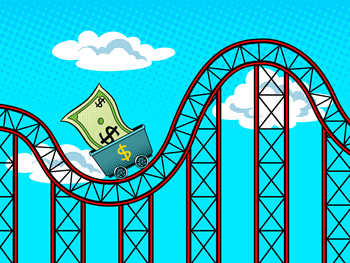 The question we’re hearing is why aren’t gas prices falling faster now that crude oil prices have dropped?
The question we’re hearing is why aren’t gas prices falling faster now that crude oil prices have dropped?
The answer isn’t that cut and dry.
Although gas prices are greatly affected by oil prices, linking the two to current prices has its caveats.
Retailers price their fuel based on replacement cost. In other words, the cost to pay for the next shipment of fuel, which is about 8,000 gallons. However, a specific station may receive less if the truck is delivering to multiple locations. The typical convenience store sells more than 5,000 gallons of fuel per day, so it’s not unusual to receive daily deliveries, with larger-volume stores seeing multiple deliveries per day. These deliveries during times of rapidly increasing wholesale prices tend to cost more.
When wholesale prices are rising, retailers may hold back the full price increase. It’s often like a game of “chicken” to see who blinks first and raises their gas price to pass along the increased wholesale costs. In this scenario, the first retailer to fully adjust prices higher could lose customers to the competition, so most retailers will opt to cut margin and absorb some of the price increase. This is what happened in March 2022 when wholesale prices jumped by 20 cents or more for multiple days, while gas prices rose by a smaller 10 or so cents per gallon during the same period.
Retail fuel gross margins (before expenses) have averaged about 30 cents per gallon over the past five years. After expenses, which can be 15 to 20 cents per gallon, a retailer typically sees profit of 10, maybe 15, cents a gallon. When margins constrict, like the week of March 7 when they were 18.7 cents per gallon, according to OPIS, retailers are often lucky to break even.
It’s also worth noting that most people don’t notice that retail gas prices often remain unchanged during the first few days of an oil price increase. When retail prices move, consumers become attuned to what’s going on at the pump. After that point, if oil prices and retail gas prices increase, most drivers assume the relationship between the two is immediate.
When oil prices begin to decline from a peak, consumers may expect retail gas prices to immediately follow suit. Instead, the lag continues and can take a few days for any price decreases to be felt at the retail level. There are usually two reasons:
First, just like when wholesale prices climb, retailers may hold their gas prices despite a lower-cost delivery to make up for the margin they lost during the price increase. On any given day, retailers don’t know where wholesale prices could be heading, so they try to recapture lost margin as quickly as possible—because they don’t know if wholesale prices may rise and margins could tighten. This means that retailers may pass along a smaller percentage of the wholesale price decrease.
Second, there is often softer demand after a period of price increases. When gas prices are a top news story, drivers often fill up in anticipation of higher prices tomorrow, even if it’s outside of their regular purchasing pattern of buying gas once a week. When more drivers are topping off gas tanks, demand slows and that affects when retailers schedule their next fuel delivery.
It’s often said, although not accurate, that gas prices rise like a rocket and fall like a feather. A prolonged period of rising oil and wholesale gas prices leads to retail price increases, and lower oil and wholesale prices lead to lower retail prices. It just may not appear to happen as quickly as customers would like.
There is one more complication right now. The fuels industry is undergoing the spring transition to government-mandated summer-blend fuels. Since 2000, gas prices have risen by an average of 50 cents from the seasonal low at the beginning of February to the seasonal high, usually in mid-May.
We can’t predict where oil prices will go, especially during a time of global uncertainty. We also can’t say where gasoline prices will go. But we do know that retailers want lower gas prices just as much as their customers. When prices are low, consumers have more disposable income to make in-store purchases. They’re also happier, which is also good for business.
Retailers also get a break from credit card swipe fees—which go up when the price of gas increases. As usual, the credit card companies are one of the winners when prices are high.